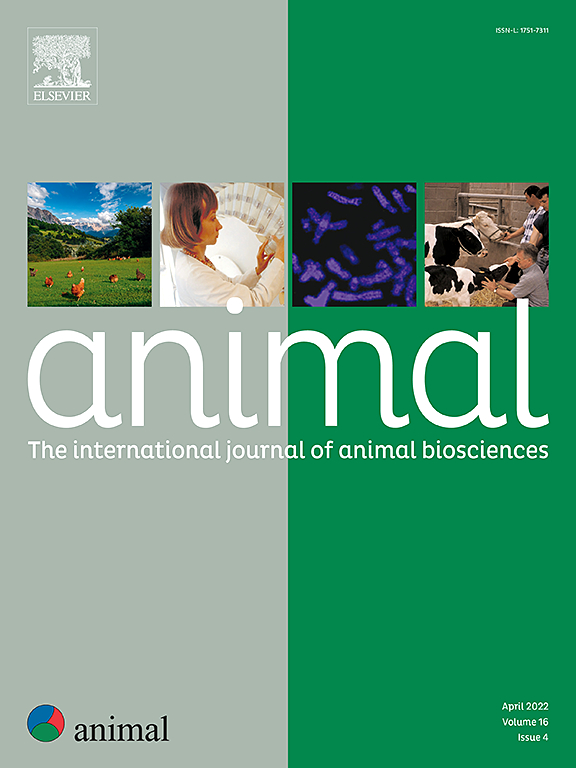农业生态动物生产系统的原则、障碍和推动因素:基于五个案例研究的定性方法。
IF 4
2区 农林科学
Q1 AGRICULTURE, DAIRY & ANIMAL SCIENCE
引用次数: 0
摘要
生态农业是减轻畜牧业对环境的负面影响和建立基于道德上可接受的生产方法的地方粮食系统的最有希望的选择之一。到目前为止,大多数关于农业生态动物生产系统的研究都是在农场规模上进行的,而农业生态原则解决社会层面和粮食系统层面方法的潜力尚未得到充分探索。在这里,我们分析了如何在瑞士、瓜德罗普岛、法国高地、保加利亚和Andalucía的五个基于草原、森林或综合作物-牲畜系统的案例研究中运用整套农业生态原则。根据多层次的视角,我们提出了一个新的八类框架,对这些不同社会生态背景下的障碍和促进因素进行分类,并讨论了这些结果对扩大和扩大动物生产区农业生态位创新的影响。虽然我们可以在每个案例研究中观察到与每个农业生态原则相关的活动,但每个原则的相对重要性不同。例如,在瑞士,重点是在多物种混合物中运行的生态过程,从而调动减少投入、协同作用、土壤健康和生物多样性的原则,而在Andalucía,一个民间社会组织、一个区域农业办公室、研究人员和农民主要在粮食系统层面调动转型原则,如社会价值观、连通性和参与。这种对比突出了生态农业如何在原则之间实现不同的平衡,以适应农民和当地社区的需要。基础设施不足和缺乏技术经常被报告为农业生态转型的障碍。如果要实现欧盟公共政策的大规模生态农业转型,政策需要超越仅仅支持畜牧业农场的生态农业实践,并采取一种面向下游和上游的系统方法。市场作为一个推动者与直接销售和短分销线路联系在一起,为当地社区的利益创造了附加值。大多数农业生态系统受益于公民和消费者的积极形象,但产品特性的变化造成了文化障碍,例如,乳制品系统中的小牛肉肉色促进了牛与小牛的长期接触。所有案例研究在生态农业的社会层面都非常先进,合作网络一直是扩大规模的推动因素之一。多主体网络方法促进了农民、研究人员和公民之间的知识交流,并允许参与者分享价值观。需要当地从业人员的长期承诺,以便实施共同设计的解决方案,这可以加强动物生产区的经济和社会可行性。本文章由计算机程序翻译,如有差异,请以英文原文为准。
Principles, barriers and enablers to agroecological animal production systems: a qualitative approach based on five case studies
Agroecology is among the most promising options to alleviate the negative impacts of animal farming on the environment and build local food systems based on ethically acceptable production methods. So far, most of the research on agroecological animal production systems was conducted at farm scale, and the potential of agroecological principles addressing social dimensions and food system−level approaches has been underexplored. Here, we analyse how the whole set of agroecological principles was mobilised in five case studies on grassland-based, silvopastoral or integrated crop-livestock systems in Switzerland, Guadeloupe, French uplands, Bulgaria and Andalucía. Following a multilevel perspective, we propose a new eight-category framework to categorise barriers and enablers in these different socioecological contexts, and discuss the implications of these results for scaling out and scaling up agroecological niche innovations in animal production areas. Though we could observe activities related to each agroecological principle in each case study, the relative importance of each principle differed. For instance, in Switzerland, the focus was on ecological processes operating in multispecies mixtures, and therefore on mobilising principles of input reduction, synergy, soil health and biodiversity, while in Andalucía, a civil society organisation, a regional agricultural office, researchers, and farmers mainly mobilised transformational principles at the food system level, e.g. social values, connectivity and participation. Such contrasts highlight how agroecology allows different equilibria among principles, adapting to the needs of farmers and local communities. Inadequate infrastructure and lack of technology were frequently reported as barriers to agroecological transitions. Policy needs to go beyond the mere support of agroecological practices on livestock farms and adopt a systems approach looking downstream and upstream if it is to enable a large-scale agroecological transition with EU public policies. Market as an enabler was linked to direct sales and short distribution circuits, generating added value to the benefit of local communities. Most agroecological systems benefited from a positive image among citizens and consumers, but cultural barriers resulted from change in product characteristics, e.g. veal meat colour in dairy system that promote long-lasting cow-calf contact. All case studies were very advanced in the social dimensions of agroecology, and cooperation networks were always reported among the enablers for scaling out. The multiactor network approach fostered knowledge exchange between farmers, researchers and citizens, and allowed participants to share values. Long-term commitment from local practitioners is required so that co-designed solutions are implemented, which can strengthen the economic and social viability of animal production areas.
求助全文
通过发布文献求助,成功后即可免费获取论文全文。
去求助
来源期刊

Animal
农林科学-奶制品与动物科学
CiteScore
7.50
自引率
2.80%
发文量
246
审稿时长
3 months
期刊介绍:
Editorial board
animal attracts the best research in animal biology and animal systems from across the spectrum of the agricultural, biomedical, and environmental sciences. It is the central element in an exciting collaboration between the British Society of Animal Science (BSAS), Institut National de la Recherche Agronomique (INRA) and the European Federation of Animal Science (EAAP) and represents a merging of three scientific journals: Animal Science; Animal Research; Reproduction, Nutrition, Development. animal publishes original cutting-edge research, ''hot'' topics and horizon-scanning reviews on animal-related aspects of the life sciences at the molecular, cellular, organ, whole animal and production system levels. The main subject areas include: breeding and genetics; nutrition; physiology and functional biology of systems; behaviour, health and welfare; farming systems, environmental impact and climate change; product quality, human health and well-being. Animal models and papers dealing with the integration of research between these topics and their impact on the environment and people are particularly welcome.
 求助内容:
求助内容: 应助结果提醒方式:
应助结果提醒方式:


